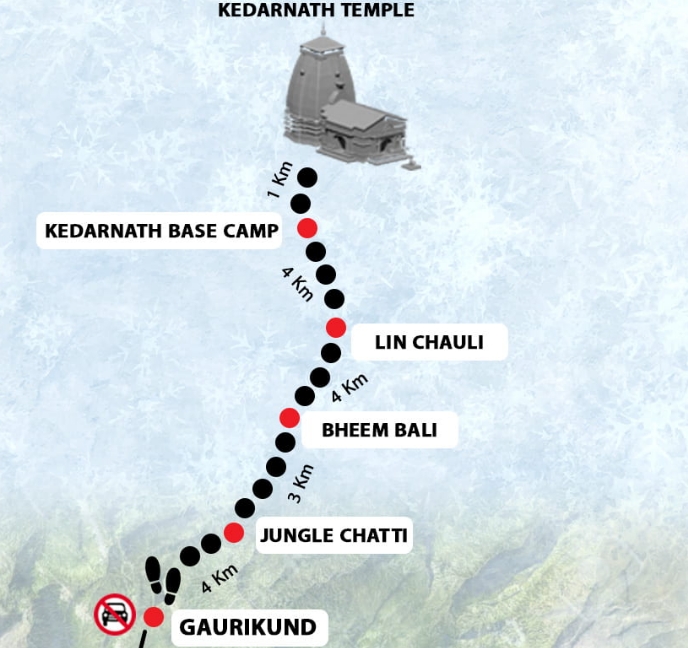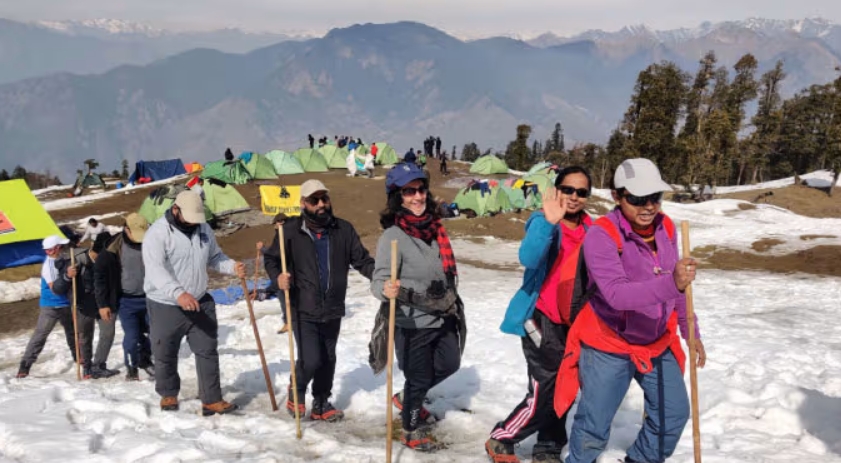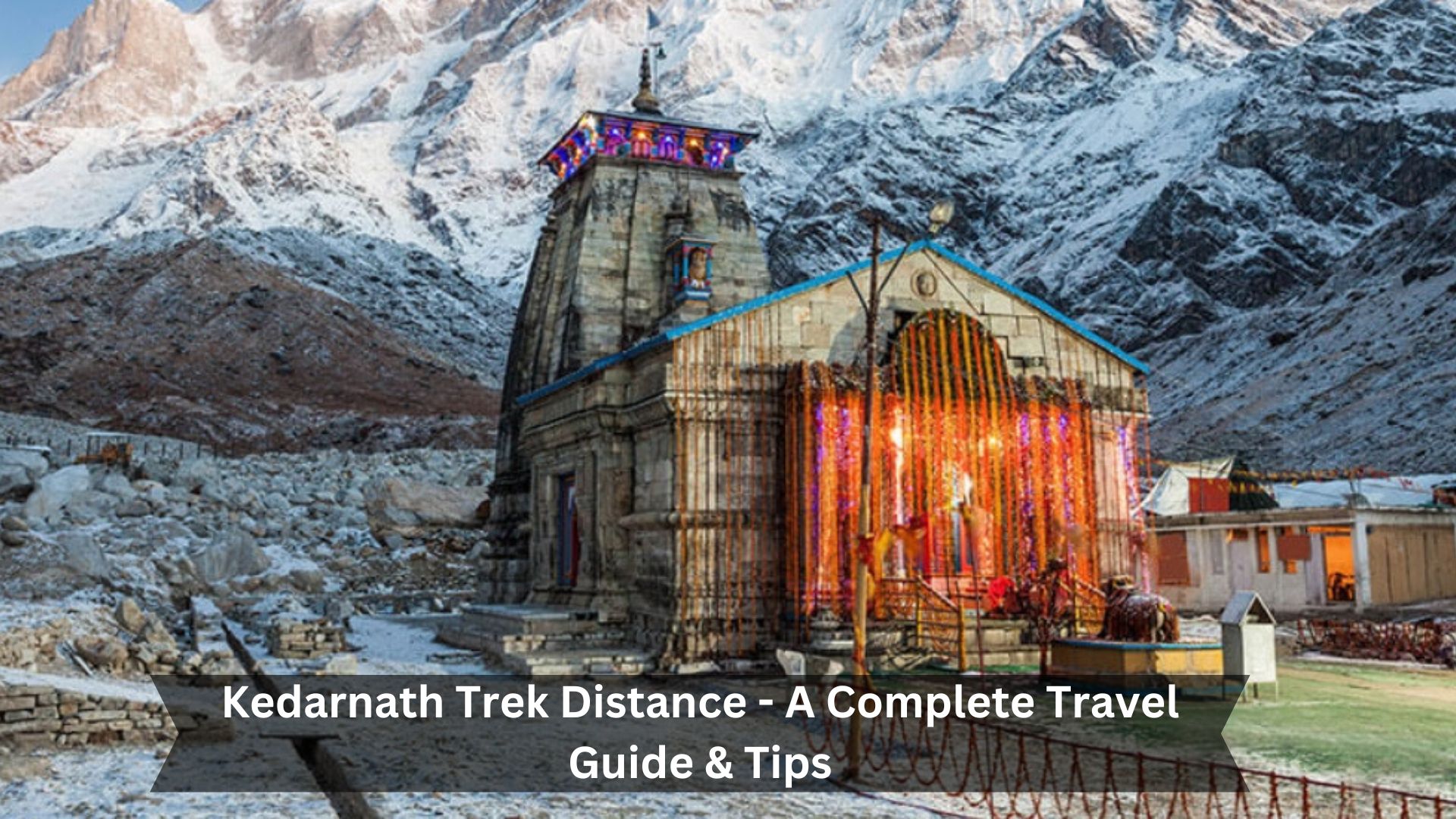Key Takeaways
- The Kedarnath Trek covers a 16-kilometer stretch from Gaurikund to the Kedarnath Temple.
- It usually takes 6 to 8 hours to complete the trek, depending on how fast you walk.
- The route, rebuilt after the 2013 floods, goes through Rambara, Linchauli, and Bhimbali, making it safer.
- Pack essentials like clothing suitable for the weather, snacks, water, and a first aid kit.
- Get used to the high altitude before the trek to handle the thin air better.
Introduction
Embarking on the Kedarnath Trek takes you through rugged landscapes and brings you close to one of Hinduism’s most sacred sites. This trek is more than a physical challenge; it’s a spiritual journey that draws thousands each year.
The path tests your endurance and refreshes your soul, offering stunning views of the Garhwal Himalayas and tranquil natural surroundings. As you climb towards the revered Kedarnath Temple, you blend devotion with adventure.
Kedarnath Trek Distance

16km trek starting from Gaurikund
The trek from Gaurikund to Kedarnath covers about 16 kilometers. This journey is both a spiritual and a scenic experience. It leads to the holy Kedarnath Temple, which honors Lord Shiva. Trekkers pass through beautiful landscapes, including lush forests, waterfalls, and the peaceful Mandakini River.
It usually takes 6 to 8 hours to complete, depending on how fast you walk and the weather conditions. The trek is open to most people in good health, but you need to be well-prepared and used to high altitudes. Along the path are small teahouses and rest stops where you can get drinks and essential services to help you on your journey.
Changed route after 2013 flood disaster
In 2013, floods severely damaged the old trekking route to Kedarnath. A new, safer 16-kilometer route was created. It starts at Gaurikund and goes through Rambara, Linchauli, and Bhimbali to reach Kedarnath.
This path is more precise and has more rest stops, making the climb easier. The route also has improved paths and emergency spots, which helps manage the large number of trekkers and enhances safety.
Tips for Kedarnath Trek

Choose a comfortable pace
Choosing the right pace is critical to successfully completing and enjoying the Kedarnath trek. The trek usually takes 6 to 8 hours and involves steep, rough paths. Because trekkers vary in fitness, it’s crucial to go at a pace that allows for regular rests and prevents tiredness.
Start early to benefit from more daylight and cooler weather, which will help you keep a steady, manageable pace. Pay attention to how you feel and adjust your speed accordingly. If you’re in a group, agree on a pace that suits the slowest member to keep everyone together and make the trek enjoyable for all.
Prepare for high altitude
Due to the increase in elevation, preparing for high altitudes is essential when planning a trek to Kedarnath. Start by spending a few days at a moderately high altitude to get used to the lower oxygen levels. Do light exercises to build stamina, but don’t push yourself too hard. This slow adjustment helps prevent altitude sickness, which includes symptoms like headaches, nausea, and dizziness.
Drink more water to stay hydrated and aid acclimatization. It’s also important to know the signs of altitude sickness and have the proper medications, as a doctor recommends. These steps will make your trek safer and more enjoyable.
Pack light and necessary items
Pack only what you need for the Kedarnath Trek. Bring clothes suitable for cold and wet weather, such as thermal wear and waterproof jackets, and wear sturdy trekking shoes. Include energy-rich snacks like nuts and dried fruits, plenty of water, and a way to purify it. Don’t forget a basic first aid kit, sunscreen, and any personal medicine.
Lightweight trekking poles and a headlamp will help on the trail. Avoid packing extra items to keep your backpack light. This will help you move easier and keep your energy up on the rugged terrain. Remember, every extra pound can slow you down.
Conclusion
The Kedarnath Trek combines spiritual importance with stunning nature, drawing pilgrims and thrill-seekers alike. The 18-kilometer journey is challenging but fulfilling, thanks to better paths made after 2013. Preparing well, staying safe, and honouring the local traditions and environment is crucial. This guide provides the key details you need for a smooth and safe trek.

Deepak Sharma is a passionate writer and avid traveler who specializes in uncovering the beauty and history of India’s attractions and temples. A graduate of Delhi University, Deepak has a deep-rooted love for his country and its rich cultural heritage.
